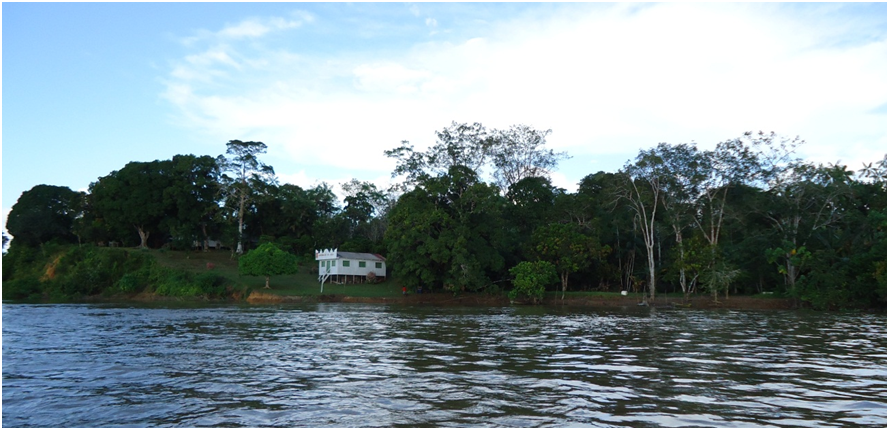COP15: now it’s biodiversity’s turn.
In recent weeks, we’ve heard all the news and progress that came from COP27. So why are we now hearing about COP15?
COP15 is the 15th Conference of the Parties to the United Nations Convention on Biological Diversity, whereas COP27 was the 27th Conference of the Parties of the United Nations Framework Convention on Climate Change.

The link between COP15 and COP27
Biodiversity and climate change are inextricably linked and need to be addressed together. However, there are separate UN summits to focus on the specific strategies for these two crucial elements. Both are equally important for achieving the climate change targets and reaching net zero.
What is the COP15 biodiversity summit about?
Where COP27 is focused on climate change, COP15 is specifically focused on biodiversity through the Convention on Biological Diversity (CBD).
This is the most important global gathering on biodiversity in the calendar. The conference is running from 7th to 19th December in Montreal, Canada. It is usually held every 2 years but has been postponed several times due to the Covid pandemic.
The summit is focused on halting nature loss through the conservation and sustainable use of biodiversity and nature’s resources.
The UN Environment Programme report states “Investments into protecting and better managing the world’s ecosystems need to reach $384 billion a year by 2025, more than double their current levels, to guard against the threats of climate change and loss of natural resources”
Who will be attending COP15?
COP15 (otherwise known as the United Nations Biodiversity Conference) is expected to have representatives from 191 countries in attendance. Although these representatives may not include the world leaders as seen at COP27, this does not mean COP15 is any less important. In fact, with less of a spotlight on the who’s who, it is likely that more technical and meaningful work can be done, and agreements reached.
There will also be around 1,400 organisations in attendance at the conference, including many from the financial and business sectors.
Objectives of the COP15 conference
The Convention on Biological Diversity (CBD) aims to secure measures to protect the worlds ecosystems, which can have a direct impact towards combatting climate change.
The main objective is to agree a new global deal to protect the world’s natural capital. On the agenda for COP15 is the Global Biodiversity Framework. This framework is to guide global actions for biodiversity through to 2030. The draft framework will be presented for consideration at the COP15 CBD in Montreal. The framework includes 23 “action targets” to be completed by 2030. The framework needs to address the key drivers of nature loss as well as unsustainable consumption and production.
Representatives will be negotiating the text of the agreement, which requires unanimous approval to pass.
Why is biodiversity so important?
Biodiversity protection is viewed as one of the most important actions that can be taken towards combatting climate change.
Alongside the loss of the worlds natural forests, biodiversity is also declining at a rapid rate. One million plant and animal species are now categorised with the threat of extinction.
Protecting the worlds biodiversity and maintaining healthy ecosystems is intrinsically linked to forest protection. Many of the world’s tropical forests house some of the most important species. Halting the loss of biodiversity is crucial and must be tackled now.
Global biodiversity loss affects the operations of all businesses, either directly or indirectly.
According to the World Economic Forum (WEF), more than 50% of global GDP is highly or moderately dependent on ecosystem services, which include raw materials provided by nature and are sustainable practices are fundamental for ensuring positive biodiversity outcomes.
“Moody’s says $1.9 trillion is at stake in nature-related risks for some industries as biodiversity loss grows at an increasing rate.”
Focus on ESG targets
Businesses are increasingly focusing on their ESG targets. Recently, they are particularly engaging with projects that deliver both environmental and biodiversity benefits. Forest protection projects such as the Trocano Araretama project have multiple objectives that benefit the climate, biodiversity, and communities.
Investing in biodiversity protection is not only about taking actions towards sustainability. Companies that invest in protecting nature are likely to enhance their reputation among customers, employees, investors as well as the communities in which they operate.
“There is no route to net zero without biodiversity” says Peter Harrison, Chief Executive of Schroders, the British multinational asset management company.
How can Natural Capital Credits help?
As a mechanism for addressing the combination of carbon, social and biodiversity protection, Natural Capital Credits are highly effective for businesses to integrate as part of their ESG strategy.
Projects that deliver both environmental and social benefits are some of the most sought-after.
Protecting existing forests to avoid and reduce deforestation and forest degradation is particularly important. They are biodiversity hotspots, long‐term carbon sinks and crucial for bio-innovation in the search for new medicines and materials.
Implementing projects with local partners, communities and municipalities ensures that activities to protect the forests and biodiversity are effective and build on local knowledge.



Comments are closed